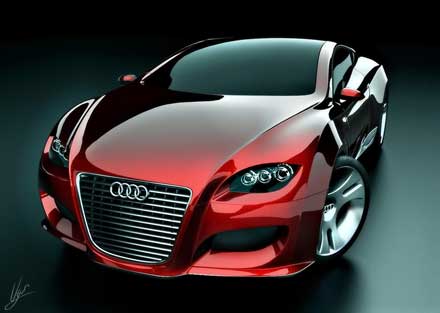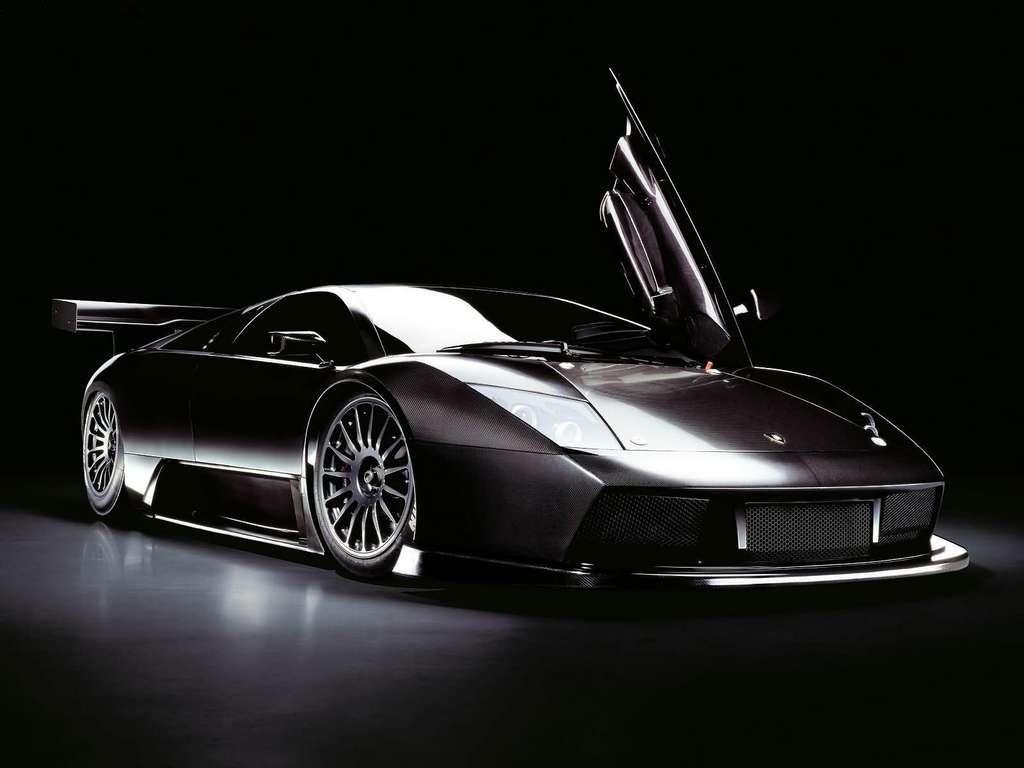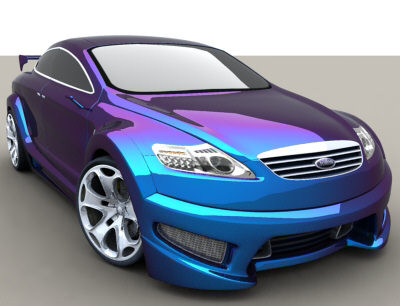 General Motor’s Vice Chairman of global product development Bob Lutz, was quite talkative at the Automotive News World Congress on Wednesday evening (Jan. 23, 2008). When Lutz took the stand he decided to share his thoughts on five specific topics that included global sales leadership, the Detroit Auto Show, consumer behaviour in
General Motor’s Vice Chairman of global product development Bob Lutz, was quite talkative at the Automotive News World Congress on Wednesday evening (Jan. 23, 2008). When Lutz took the stand he decided to share his thoughts on five specific topics that included global sales leadership, the Detroit Auto Show, consumer behaviour in “Five Things I Think I Think”
Remarks by Robert A. Lutz
Automotive News World Congress
January 23, 2008
Thanks and good evening, everyone. It’s a pleasure to be back at the Automotive News World Congress.
It’s been five years since I’ve spoken here, which seems unbelievable to me, but it’s true. Back in ’03, I predicted that the automotive industry was on the cusp of a New Golden Age… then proceeded to explain how the New Golden Age wasn’t going to look much like the Old Golden Ages.
To my credit, I didn’t say exactly when this was going to happen…
Obviously, we’re not reveling in the throes of a Golden Age at the moment… But it’s not chopped liver, either. I would argue that the industry is in much better shape than it was five years ago, and that General Motors is in a lot better shape too. Our cars and trucks have improved, and we just had our second best sales year ever, with growth in total and in three of four regions of the world.
I would also argue that this industry is on the cusp of major change — for the better — and it’s going to look radically different in the future as a result, although it will be for reasons none of us imagined five years ago.
So, tonight, I’m going to tell you what I think… about a lot of things.
And the reason for that is simple: Over the past week or two, with the Detroit show and accompanying hoopla, I’ve been asked more times than I can count, “Hey, Bob, what do you think about this? What do you think about that?”
I’ve done a lot of media interviews, obviously, and so I’d get the question there, but I also got it from friends and colleagues on the show floor or at various events. “What do you think?”
Well, tonight, I’m going to tell you “Five Things I Think I Think.”
And the first one is one I’m going to get out of the way right away, before any of you has a chance to say, “Hey Bob, what do you think about ‘Global Sales Leadership’?”
And the answer is: I don’t think about it. And the answer would be the same whether today’s numbers said General Motors is Number One, or Number Two… or tied!
Last time I checked, being the biggest or second-biggest automaker on the planet had absolutely no effect whatsoever on your P&L statement, your share price, or your market cap. It has nothing to do with it.
Would we like to be the world’s largest automaker? Sure! Who wouldn’t? Will we continue to fight tooth and nail for every possible sale this year and beyond in the hopes of doing so? Absolutely.
However, the bottom line is, we are running the business in the best interest of the customers, employees and shareholders. Period. And that’s what we’ll continue to do, no matter what.
Besides, there seems to be some hostility generated by some in the American media and academia toward Number One, because to them, the biggest corporation is obviously the “baddest” corporation.
So I feel like for the last 76 years we’ve been like the guy at the county fair with his head poking through the rubber sheet and people throwing pies at him. If it’s time to pull our head out of that rubber sheet, wipe our eyes and our hair and let somebody else catch some pie in the face for awhile, so be it.
By the way, I prefer lemon meringue.
OK? On to number two on the list of things I think I think, and that is this: “The Detroit show was not lacking buzz.”
I couldn’t believe some of the post-show write-ups that characterized it as “lackluster” or “without its usual buzz.”
How can you possibly not find any buzz at an auto show that includes so many examples of the world’s most advanced propulsion technology … and a 620-hp Corvette … and a 550-hp Cadillac… and two significant full size pickup debuts… not to mention a city street full of longhorn cattle — some of whom were clearly very close friends?
I’m sorry, but there’s no explanation other than the fact that this is another case of some members of the media displaying – if you’ll pardon the expression at this juncture – a herd mentality.
I talked to an awful lot of journalists during the show, and I heard very, very few of them, individually, say this year’s show was sub-par. And yet, collectively, in print, many ran stories bemoaning the lack of enthusiasm and the dearth of show-stopping vehicles.
Some of them complained that in these troubled times of over-dependence on foreign oil and increasing fuel economy standards, dumb old Detroit is still showing nothing but new pickups and gobs of horsepower — how woefully behind the times!
Well, that’s not what I see. I see companies working hard to move the ball down the field on advanced technologies, and I see companies at the same time giving customers what they want.
People still have need for trucks in this country. People still buy them for work. People still want them to haul boats and horse trailers. Everyone is not going to suddenly switch into Smart Cars, or Saturn Astras, or tiny little pickups, unless they suddenly decide to haul tiny little horse trailers carrying tiny little horses.
And as for high-performance vehicles, as I said at the show, there is plenty of room in the global automotive market for green and mean. The Corvette ZR1 and Cadillac CTS-V, in fact, both captured major awards for Best in Show and I don’t think we’ll have much trouble finding people who want to buy them.
Now I’m not saying that everyone in the press is short-sighted on this issue— don’t get me wrong. On the contrary, I think the majority of them understand that the market is broad enough for this.
Most of them get the fact that just because the grocery store is greatly expanding its line of organically grown vegetables, it doesn’t mean that it shuts down the meat counter.
Which brings me to my third assertion, and that is “Consumer behaviour is difficult to change, and it when it does change, it takes time, and a darn good reason.”
For example… look at the differences in automotive purchase behavior between Europeans and Americans, which is basically dictated by the price of gasoline.
Take a Chevrolet Cobalt entry-level model here in North America, and a premium, loaded Opel Astra in Europe with six-speed, leather upholstery and power everything.
Here are two cars basically off the same architecture. One sells here for around $13,000 and frankly, it’s not breaking any sales records, even at that price. The other sells for more than $30,000 and its Europe’s second-largest selling car.
Why is that? Well, it’s because Europeans, at their fuel prices, are willing to pay premium prices for premium small cars that deliver terrific fuel economy.
That is not the case here in America, land of the big truck and big horse.
Nor will it magically become the case once the fleet we offer for sale hits a 35-mile-per-gallon average. It will only be the case if gas prices rise sharply to levels near what they’re paying in Europe.
We refuse to let the price of fuel rise gradually in the U.S., and therefore we fail to induce change in consumer behavior. If for the last 15 years we’d had a slow but sure rise in federal fuel taxation of 15 cents a gallon per year… that would have gradually put the customer in the equation.
Every time people look for a new vehicle, they would think, ‘Hey, how much am I paying for gasoline? Is it perhaps time to go to a slightly smaller vehicle?’
We could have, over time and without any federal fuel-economy regulation, used the market mechanism to gradually transition the American public into a vehicle mix that looks a lot more like Europe’s, smaller and more diesel-oriented.
I’m not advocating tax hikes or calling for higher fuel prices, I’m just explaining the difference between the European fleet and our own.
And in America, instead of raising fuel prices, we’ll end up having to raise new vehicle prices, because of the increased use of lightweight materials and fuel-saving technology. And that, in turn, is going to cause people to hang on to the vehicles they have longer and so it will take that much longer to roll over the fleet on the road today, which is exactly counter to the intended effect.
And if the intended effect is to lower our dependence on petroleum and imported oil, well, it won’t do that either.
Which brings us to the fourth thing I think I think: “The best route to a significant near-term reduction in petroleum usage is E85.”
It’s just common sense! As I said, you don’t roll over the whole fleet at once. It takes decades… and the bigger the price disparity between the old ones and the new ones, the longer it takes.
I kept getting the question at the show… if GM is so gung ho on electrified vehicles and hybrids and fuel cells, then why this emphasis on E85? Why the deal with Coskata? They’d ask, “Which of these technologies are you really for?” And I’d say, “Yes!”
As Rick Wagoner said at the show, several times, the answer is we are for all of the above, but ethanol and biofuels are the best near-term solution. Yes, we continue to work on electrically driven vehicles, as fast as we can, but realistically, they are going to take many years to be on the road in volumes that make much of a dent in petroleum usage.
We need to make more of an impact on petroleum usage, more quickly than that. We already have millions of flex-fuel vehicles on the road right now… more than 6 million in the U.S. alone… vehicles that could be running on ethanol, if it were more readily available.
In fact, as Rick said, if all the flex-fuel vehicles that GM, Ford, and Chrysler have committed to have on the road by 2020… were to run on ethanol, we could displace 29 billion gallons of gasoline annually… or 18 percent of the projected petroleum usage at that time.
And if all manufacturers in the U.S. made that same commitment, we could save 53 billion gallons of gasoline annually… or 32 percent of our petroleum usage.
Nothing else we can do… gets even close to that kind of impact, that soon. What’s more, ethanol offers a cleaner alternative to petroleum… it’s adaptable to our refueling infrastructure… it doesn’t have to be imported… and it requires little change in that pesky subject I mentioned earlier: consumer behavior.
Now, that said, let me tell you the fifth and final item on the list: “Electrically driven vehicles powered by lithium ion batteries represent the long term future of the automobile industry.”
A year ago, everyone was saying, ‘What’s GM doing with this car that’s allegedly going to run on lithium ion batteries, which we all know won’t work in a car?’ Fast forward to this year, and we saw no fewer than five automotive companies at the show with concepts that are purported to either someday run on lithium ion batteries, or a lithium ion propulsion system that’s just around the corner.
But remember, not all lithium ion technology is created equal. It’s like beer. Some people say beer tastes bad. But there are many different types… you’ve got pilsner, ale, stout, wheat beer… some beers are better than others.
Just because somebody says one particular lithium ion technology is a little bit aggressive and it’s been known to cause thermal problems, does not mean they all do. Some approaches are better than others, and the technology is advancing every day. Just recently scientists at Stanford presented technology using nanosilicon wires in the lithium ion mix that offers 10 times the energy storage. That would make a 40-mile-range become 400 miles, in theory.
This and other advancements may be years away, in reality, but we’re going to be ready, because we’re developing the vehicles, the drive systems, the electronic control technology… today
We are going to be ready, more ready than anyone else is going to be, when the battery technology is beyond what it is right now. And then you’re going to see, gradually but emphatically, the auto industry enter a whole new age.
That’s what I think, anyway. Thank you very much for your kind attention. Now, all those thoughts probably stirred up some questions, so I think we have time to take a few of them …









